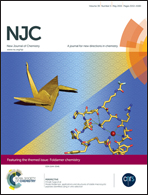The S-hindered synthesis of PbSe/PbS nanosheets with enhanced electrochemical activities†
Abstract
PbSe/PbS nanosheets (PPNS) with a grain boundary have been fabricated using a simple hydrothermal method. Experimental parameters, such as the kind of sulfur source and amount of sulfur powder, play crucial roles in determining the morphologies and composites of the final products. It is proposed that the growth mechanism of the inhibitor (sulfur powder) hinders the assembly process via SEM, TEM and XRD studies. PbSe/PbS was firstly studied for use as the anode material in a Li-ion cell. The grain boundary of PPNS can provide a highly conductive path for ions and charges. Therefore, compared with PbSe, higher rate capability and capacity retention for PPNS are measured.


 Please wait while we load your content...
Please wait while we load your content...